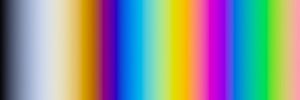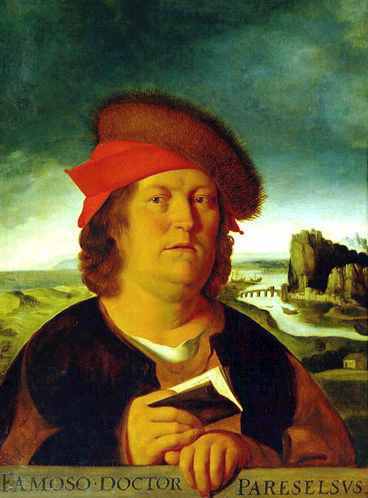Theoparacelsite
A valid IMA mineral species
This page is currently not sponsored. Click here to sponsor this page.
About Theoparacelsite
Formula:
Cu3(As2O7)(OH)2
Colour:
Dark pistachio green
Lustre:
Adamantine, Vitreous
Specific Gravity:
4.72 (Calculated)
Crystal System:
Orthorhombic
Name:
For Swiss scientist Paracelsus, whose full name was Philippus Theophrastus Aureolus Bombastus von Hohenheim (1493–1541), an eminent physician, chemist, toxicologist and alchemist who also worked in metallurgy and in mineralogy.
Unique Identifiers
Mindat ID:
10589
Long-form identifier:
mindat:1:1:10589:7
GUID
(UUID V4):
(UUID V4):
e8496c33-35b6-4d92-84e6-b2e331315a6e
Classification of Theoparacelsite
Approved
Approval year:
1998
First published:
2001
Type description reference:
8.BB.65
8 : PHOSPHATES, ARSENATES, VANADATES
B : Phosphates, etc., with additional anions, without H2O
B : With only medium-sized cations, (OH, etc.):RO4 about 1:1
8 : PHOSPHATES, ARSENATES, VANADATES
B : Phosphates, etc., with additional anions, without H2O
B : With only medium-sized cations, (OH, etc.):RO4 about 1:1
Mineral Symbols
As of 2021 there are now IMA–CNMNC approved mineral symbols (abbreviations) for each mineral species, useful for tables and diagrams.
| Symbol | Source | Reference |
|---|---|---|
| Thp | IMA–CNMNC | Warr, L.N. (2021). IMA–CNMNC approved mineral symbols. Mineralogical Magazine, 85(3), 291-320. doi:10.1180/mgm.2021.43 |
Physical Properties of Theoparacelsite
Adamantine, Vitreous
Transparency:
Translucent
Colour:
Dark pistachio green
Streak:
Yellowish-green
Tenacity:
Brittle
Cleavage:
Perfect
on {001}
on {001}
Fracture:
Conchoidal
Density:
4.72(1) g/cm3 (Calculated)
Optical Data of Theoparacelsite
Type:
Biaxial (+)
RI values:
nα = 1.810(1) nβ = 1.820(1) nγ = 1.860(1)
2V:
Measured: 57° (3), Calculated: 54°
Max Birefringence:
δ = 0.050

Image shows birefringence interference colour range (at 30µm thickness)
and does not take into account mineral colouration.
and does not take into account mineral colouration.
Surface Relief:
Very High
Dispersion:
r > v marked
Optical Extinction:
X = a; Y = c; Z = b.
Pleochroism:
Visible
Comments:
α = light olive green, β = olive green, γ = dark
green.
green.
Chemical Properties of Theoparacelsite
Formula:
Cu3(As2O7)(OH)2
IMA Formula:
Cu3(OH)2As2O7
Elements listed:
Crystallography of Theoparacelsite
Crystal System:
Orthorhombic
Class (H-M):
mmm (2/m 2/m 2/m) - Dipyramidal
Space Group:
Pmma
Setting:
Pmma
Cell Parameters:
a = 8.3212(8) Å, b = 2.9377(3) Å, c = 4.6644(5) Å
Ratio:
a:b:c = 2.833 : 1 : 1.588
Unit Cell V:
114.02 ų (Calculated from Unit Cell)
Z:
1
Morphology:
Anhedral grains 0.2 × 0.1 × 0.05 mm, as smaller equidimension
crystals, and as rectangular crystals elongate [010], flattened
{001}, showing {001}, {010}, {100}, {110}, and {101}; also
powdery, and as pseudomorphs after olivenite.
crystals, and as rectangular crystals elongate [010], flattened
{001}, showing {001}, {010}, {100}, {110}, and {101}; also
powdery, and as pseudomorphs after olivenite.
Crystal Structure
Load
Unit Cell | Unit Cell Packed
2x2x2 | 3x3x3 | 4x4x4
Unit Cell | Unit Cell Packed
2x2x2 | 3x3x3 | 4x4x4
Show
Big Balls | Small Balls | Just Balls | Spacefill
Polyhedra Off | Si Polyhedra | All Polyhedra
Remove metal-metal sticks
Big Balls | Small Balls | Just Balls | Spacefill
Polyhedra Off | Si Polyhedra | All Polyhedra
Remove metal-metal sticks
Display Options
Black Background | White Background
Perspective On | Perspective Off
2D | Stereo | Red-Blue | Red-Cyan
Black Background | White Background
Perspective On | Perspective Off
2D | Stereo | Red-Blue | Red-Cyan
View
CIF File Best | x | y | z | a | b | c
CIF File Best | x | y | z | a | b | c
Rotation
Stop | Start
Stop | Start
Labels
Console Off | On | Grey | Yellow
Console Off | On | Grey | Yellow
Data courtesy of the American Mineralogist Crystal Structure Database. Click on an AMCSD ID to view structure
| ID | Species | Reference | Link | Year | Locality | Pressure (GPa) | Temp (K) |
|---|---|---|---|---|---|---|---|
| 0012036 | Theoparacelsite | Sarp H, Cerny R (2001) Theoparacelsite, Cu3(OH)2As2O7, a new mineral: its description and crystal structure Archives des Sciences, Geneve 54 7-14 | 2001 | near Nice, France | 0 | 293 |
CIF Raw Data - click here to close
X-Ray Powder Diffraction
Powder Diffraction Data:
| d-spacing | Intensity |
|---|---|
| 4.065 Å | (15) |
| 3.104 Å | (100) |
| 2.486 Å | (70) |
| 2.400 Å | (25) |
| 2.330 Å | (15) |
| 1.672 Å | (30) |
| 1.596 Å | (25) |
| 1.330 Å | (25) |
Geological Environment
Paragenetic Mode(s):
| Paragenetic Mode | Earliest Age (Ga) |
|---|---|
| Stage 7: Great Oxidation Event | <2.4 |
| 47a : [Near-surface hydration of prior minerals] | |
| 47d : [Arsenates, antimonates, selenates, bismuthinates] |
Type Occurrence of Theoparacelsite
General Appearance of Type Material:
Aggregates in cuprite cavities 1 mm in diameter. The aggregates consist of
crystals (up to 0.2x0.1x0.05 mm), rectangular elongate crystals (up to 90x10x5 µm), perfect rectangular crystals (10x7 x µm), equidimensional crystals (~20 µm), pseudomorphs after thin acicular crystals of olivenite. Also as powder.
crystals (up to 0.2x0.1x0.05 mm), rectangular elongate crystals (up to 90x10x5 µm), perfect rectangular crystals (10x7 x µm), equidimensional crystals (~20 µm), pseudomorphs after thin acicular crystals of olivenite. Also as powder.
Place of Conservation of Type Material:
Natural History Museum of Geneva, Switzerland.
Geological Setting of Type Material:
Oxidation zone.
Associated Minerals at Type Locality:
Reference:
Sarp, H. and Cerny R., 2001, Theoparacelsite, Cu3(OH)2As2O7, a new mineral: its description and crystal structure: Arkives de Science Genève: 54(1): 7-14.
Synonyms of Theoparacelsite
Other Language Names for Theoparacelsite
Common Associates
Associated Minerals Based on Photo Data:
| 3 photos of Theoparacelsite associated with Trippkeite | Cu2+As3+2O4 |
Related Minerals - Strunz-mindat Grouping
| 8.BB. | Tilasite | CaMg(AsO4)F |
| 8.BB.X | Arsenowagnerite | Mg2(AsO4)F |
| 8.BB. | Moabite | NiFe3+(PO4)O |
| 8.BB. | Karlditmarite | Cu9O4(PO4)2(SO4)2 |
| 8.BB. | Milkovoite | Cu4O(PO4)(AsO4) |
| 8.BB. | Paulgrothite | Cu9Fe3+O4(PO4)4Cl3 |
| 8.BB.05 | Amblygonite | LiAl(PO4)F |
| 8.BB.05 | Montebrasite | LiAl(PO4)(OH) |
| 8.BB.05 | Tavorite | LiFe3+(PO4)(OH) |
| 8.BB.10 | Triplite | Mn2+2(PO4)F |
| 8.BB.10 | Zwieselite | Fe2+2(PO4)F |
| 8.BB.15 | Sarkinite | Mn2+2(AsO4)(OH) |
| 8.BB.15 | Triploidite | Mn2+2(PO4)(OH) |
| 8.BB.15 | Wagnerite | (Mg,Fe2+)2(PO4)F |
| 8.BB.15 | Wolfeite | Fe2+2(PO4)(OH) |
| 8.BB.15 | Stanĕkite | (Mn2+,Fe2+,Mg)Fe3+(PO4)O |
| 8.BB.15 | Joosteite | Mn2+(Mn3+,Fe3+)(PO4)O |
| 8.BB.15 | Hydroxylwagnerite | Mg2(PO4)(OH) |
| 8.BB.15 | Unnamed (Sb-analogue of Auriacusite) | Fe3+Cu2+[(Sb,As)O4]O |
| 8.BB.20 | Holtedahlite | Mg2(PO4)(OH) |
| 8.BB.20 | Satterlyite | (Fe2+,Mg,Fe)12(PO4)5(PO3OH)(OH,O)6 |
| 8.BB.25 | Althausite | Mg4(PO4)2(OH,O)(F,◻) |
| 8.BB.30 | Adamite | Zn2(AsO4)(OH) |
| 8.BB.30 | Eveite | Mn2+2(AsO4)(OH) |
| 8.BB.30 | Libethenite | Cu2(PO4)(OH) |
| 8.BB.30 | Olivenite | Cu2(AsO4)(OH) |
| 8.BB.30 | Zincolibethenite | CuZn(PO4)(OH) |
| 8.BB.30 | Zincolivenite | CuZn(AsO4)(OH) |
| 8.BB.30 | Auriacusite | Fe3+Cu2+(AsO4)O |
| 8.BB.35 | Paradamite | Zn2(AsO4)(OH) |
| 8.BB.35 | Tarbuttite | Zn2(PO4)(OH) |
| 8.BB.40 | Barbosalite | Fe2+Fe3+2(PO4)2(OH)2 |
| 8.BB.40 | Hentschelite | CuFe3+2(PO4)2(OH)2 |
| 8.BB.40 | Lazulite | MgAl2(PO4)2(OH)2 |
| 8.BB.40 | Scorzalite | Fe2+Al2(PO4)2(OH)2 |
| 8.BB.40 | Wilhelmkleinite | ZnFe3+2(AsO4)2(OH)2 |
| 8.BB.45 | Trolleite | Al4(PO4)3(OH)3 |
| 8.BB.45 | Yaroshevskite | Cu9O2(VO4)4Cl2 |
| 8.BB.45 | Dokuchaevite | Cu8O2(VO4)3Cl3 |
| 8.BB.50 | Namibite | Cu(BiO)2(VO4)(OH) |
| 8.BB.50 | Aleutite | [Cu5O2](AsO4)(VO4) · (Cu,K,Pb,Rb,Cs,)Cl |
| 8.BB.52a | Ericlaxmanite | Cu4O(AsO4)2 |
| 8.BB.52b | Kozyrevskite | Cu4O(AsO4)2 |
| 8.BB.55 | Phosphoellenbergerite | (Mg,◻)2Mg12(PO4,PO3OH)6(PO3OH,CO3)2(OH)6 |
| 8.BB.55 | Popovite | Cu5O2(AsO4)2 |
| 8.BB.60 | Urusovite | CuAl(AsO4)O |
| 8.BB.70 | Turanite | Cu5(VO4)2(OH)4 |
| 8.BB.75 | Stoiberite | Cu5(VO4)2O2 |
| 8.BB.80 | Fingerite | Cu11(VO4)6O2 |
| 8.BB.85 | Averievite | Cu6(VO4)2O2Cl2 |
| 8.BB.90 | Lipscombite | Fe2+Fe3+2(PO4)2(OH)2 |
| 8.BB.90 | Richellite | CaFe3+2(PO4)2(OH,F)2 |
| 8.BB.90 | Zinclipscombite | ZnFe3+2(PO4)2(OH)2 |
Fluorescence of Theoparacelsite
none
Other Information
Notes:
Soluble in HCl.
Health Risks:
No information on health risks for this material has been entered into the database. You should always treat mineral specimens with care.
Internet Links for Theoparacelsite
mindat.org URL:
https://www.mindat.org/min-10589.html
Please feel free to link to this page.
Please feel free to link to this page.
External Links:
Mineral Dealers:
References for Theoparacelsite
Reference List:
Localities for Theoparacelsite
Locality List
 - This locality has map coordinates listed.
- This locality has map coordinates listed.
 - This locality has estimated coordinates.
ⓘ - Click for references and further information on this occurrence.
? - Indicates mineral may be doubtful at this locality.
- This locality has estimated coordinates.
ⓘ - Click for references and further information on this occurrence.
? - Indicates mineral may be doubtful at this locality.
 - Good crystals or important locality for species.
- Good crystals or important locality for species.
 - World class for species or very significant.
(TL) - Type Locality for a valid mineral species.
(FRL) - First Recorded Locality for everything else (eg varieties).
- World class for species or very significant.
(TL) - Type Locality for a valid mineral species.
(FRL) - First Recorded Locality for everything else (eg varieties).
All localities listed without proper references should be considered as questionable.
France (TL) | |
|
Quick NavTopAbout TheoparacelsiteUnique IdentifiersClassification Mineral SymbolsPhysical Properties Optical Data Chemical Properties Crystallography Crystal StructureX-Ray Powder DiffractionGeological EnvironmentType Occurrence SynonymsOther LanguagesCommon AssociatesStrunz-MindatFluorescence Other InformationInternet Links References Localities Locality List






 symbol to view information about a locality.
The
symbol to view information about a locality.
The 



Roua Mines, Daluis, Nice, Alpes-Maritimes, Provence-Alpes-Côte d'Azur, France